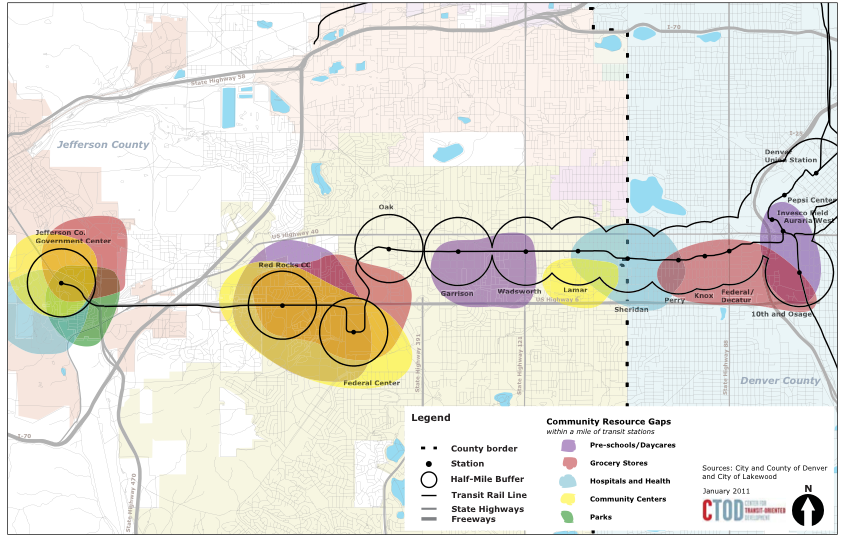CENTER FOR TRANSIT-ORIENTED DEVELOPMENT
Executive Summary
Light rail in the West Corridor presents an incredible opportunity for transit-oriented development to leverage market momentum for new investment and community building. A focus on TOD will support growth near new transit stations, enhance access to opportunity, preserve and enhance the supply of a range of housing choices, reduce the combined costs of housing and transportation, and support walking and biking to stations. However, implementing TOD along the West Corridor will not be a quick or simple process. The overall economic conditions in the country are vastly impacting the pace and magnitude of private sector development activity everywhere. This macro-level challenge, combined with some micro-market conditions along the West Corridor, where residential home values are relatively low and the potential value increases related to transit have not yet been realized, indicates that in the near term, most implementation activity in the West Corridor will fall to public agencies.
Fortunately, four public partners in the West Corridor – the Cities of Denver and Lakewood, the Denver Housing Authority and Metro West Housing Solutions – recognize the opportunity for TOD and necessity of a corridor-wide partnership. The West Corridor Working Group (WCWG) coalesced around the objective to create a TOD implementation strategy for the corridor. These public agencies will be the leading public-sector agencies to initiate TOD activities in the corridor. By laying the foundation now through activities such as adopting appropriate policies and investing in high value catalytic projects, the WCWG can ensure that over time and as the market matures, the overall value of new private investment will ultimately surpass the public investment.
This report, funded by the West Corridor Working Group, provides a comprehensive summary of relevant information for TOD and strategies for implementing successful in the West Corridor. The Center for Transit-Oriented Development (CTOD) examined the fourteen station area plans as well as demographic, economic and real estate conditions at each station and throughout the West Corridor. Based on the demographics, economics, real estate conditions, the station areas were organized into three types of categories for implementation as transformational, intensification and infill stations. CTOD provides recommendations to the WCWG for moving from vision in the station area plans to reality in the corridor.
The implementation process differs depending on the condition of the real estate market in a particular location. In a cooler market, it is especially important that the WCWG continue to exhibit leadership by intervening with public-sector support for infrastructure and amenities. In hotter market locations, there will be less need for the public sector to intervene initially, but it can assist with the financing of infrastructure and amenities that make a location attractive to TOD.
About Center for Transit-Oriented Development
www.ctod.org
“The Center for Transit-Oriented Development (CTOD) is the only national nonprofit effort dedicated to providing best practices, research and tools to support equitable market-based transit-oriented development. CTOD partners with both the public and private market sectors to strategize about ways to encourage the development of high performing communities around transit stations and to build transit systems that maximize development potential. CTOD works to integrate local and regional planning, generate new tools for economic development, real estate and investment issues, improve affordability and livability for all members of the community, and respond to imperatives for climate change and sustainability. The Center for TOD is a partnership of Reconnecting America, the Center for Neighborhood Technology, and Strategic Economics.”
Tags: Center for Transit Oriented Development, CTOD, Denver, Transit, West Corridor







 RSS Feed
RSS Feed